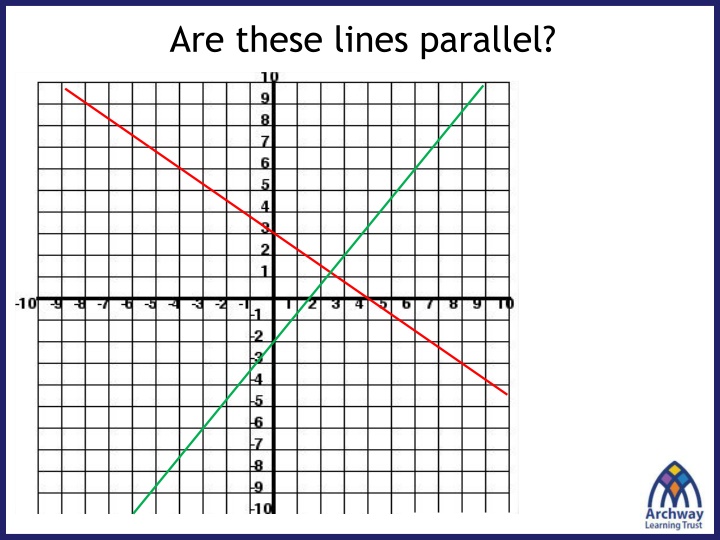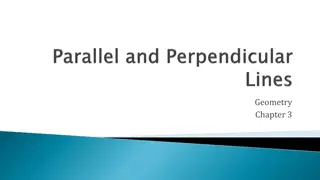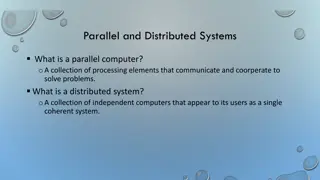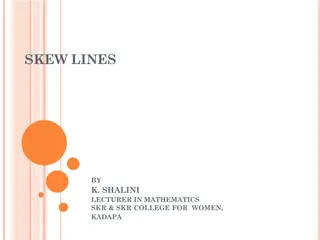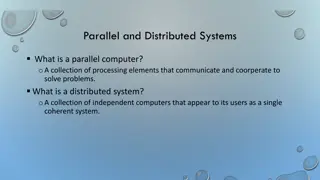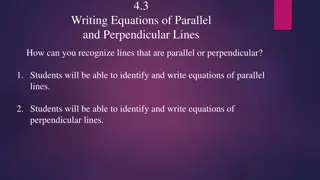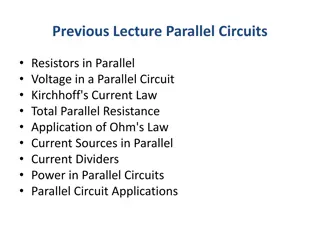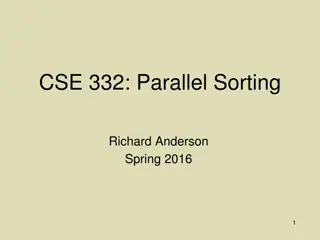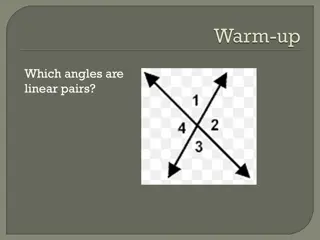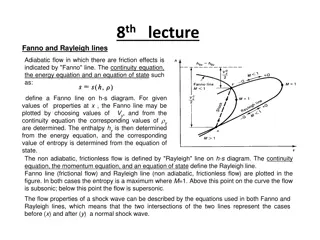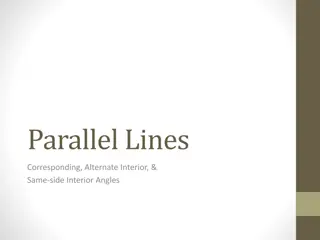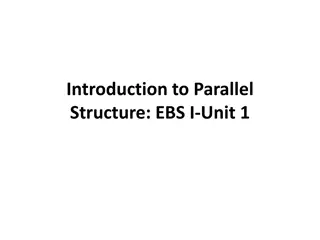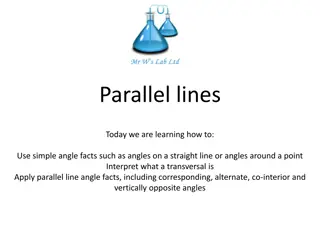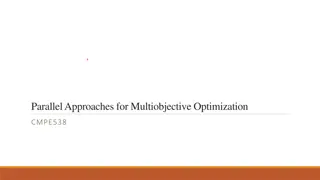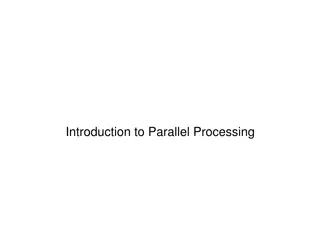Are these lines parallel?
This content delves into understanding the concepts of parallel and perpendicular lines, focusing on gradients and how to determine if lines are parallel or perpendicular. It also covers the relationship between gradients of perpendicular lines and provides examples for better comprehension.
Download Presentation

Please find below an Image/Link to download the presentation.
The content on the website is provided AS IS for your information and personal use only. It may not be sold, licensed, or shared on other websites without obtaining consent from the author.If you encounter any issues during the download, it is possible that the publisher has removed the file from their server.
You are allowed to download the files provided on this website for personal or commercial use, subject to the condition that they are used lawfully. All files are the property of their respective owners.
The content on the website is provided AS IS for your information and personal use only. It may not be sold, licensed, or shared on other websites without obtaining consent from the author.
E N D
Presentation Transcript
Are they perpendicular? They look perpendicular, but how can we be certain? We can compare their gradients
Find the gradient of each line 1 2 Gradient = 1 2 2 Gradient = -2 1
Find the gradient of each line Gradient = 3 1 3 3 1 Gradient = 1 3
Are they perpendicular? -2 3 Compare the gradients What do you notice?
Perpendicular Lines Perpendicular lines meet at right angles The product of the gradients of perpendicular lines is always -1. The gradients are the negative reciprocal of each other
Fill in the blanks The gradient of a perpendicular line is the negative reciprocal of the other This means that when the equations are in the form y = mx + c -1
In your books: Write an equation of a line that is parallel to these Equation Gradient A Parallel Line Perpendicular Gradient y = 2x + 1 m = 2 y = 2x + c y = 2 + 4x m = 4 y = 4x + c y = 3x + 2 m = 3 y = 3x + c y + 2x = 2 m = -2 y = -2x + c Challenge: 2y = 3x 2 5y + 2x = 3
By comparing gradients state whether the following pairs of lines are perpendicular.
Fill in the gaps with the negative reciprocal 3 x = -1 7 x = -1 -9 x = -1 -5 x = -1 x 5 = -1 1 5 x = -1 2 7 x = -1
Consider the following line that has a gradient of 4: y1 y x On your whiteboards: Give me an equation of a line that would be perpendicular to this line and another
Consider the following line that has a gradient of 4: y1 y x Discuss: How many lines are there that are perpendicular to this one?
Consider the following line that has a gradient of 4: y1 y x Discuss: How could I change my question so that there was only one correct equation? What other information would you need?
There are an infinite number of lines that are perpendicular to the one I have drawn We do not have enough information to be able to determine which y1 y particular line it is. x ? ? To do this we must have a coordinate on ? the new line as well.
Find the equation of the line that is perpendicular to y = 3x + 2 and that passes through the point (0, -1) Discuss: What new information do we have in this question?
Find the equation of the line that is perpendicular to y = 3x + 2 and that passes through the point (0, -1) How can we find the gradient of the new line? What will the y-intercept of the new line be? What is the equation of the new line?
On your whiteboards Find the equation of the line that is perpendicular to ? = 2? + 5 and that passes through the point (0, 1) m = c = Equation
In your books Find the equation of the line that is perpendicular to ? = 5? + 7 and that passes through the point (0, -1) m = c = Equation
